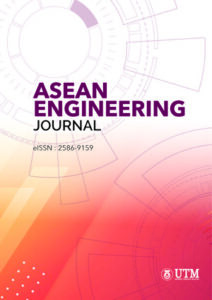CO-DIGESTION OF GREASY WASTE AND MBR SLUDGE USING BIO-AUGMENTED PSEUDOMONAS PUTIDA: EFFECT OF BUFFERING AGENTS
DOI:
https://doi.org/10.11113/aej.v11.17860Keywords:
Anaerobic, Biogas, Co-digestion, Pseudomonas putida, Oil/Grease, Sludge, WasteAbstract
This study aims to investigate the bio-augmentation of Pseudomonas putida for initializing fat, oil,
and grease (FOG) biodegradation in a co-digestion of the greasy waste and the membrane
bioreactor (MBR) excess sludge. The MBR sludge could be an additional nitrogen source
concurrently as a waste matrix fluidizer. Three rounds of a fed-batch of an HRT of 56-71 days
were carried out. The first (B1) and second (B2) batches using phosphate (Na2HPO4) solution as a
buffering system. It showed that the digesters with bio-augmented P. putida could remove more
FOG than that of the control. In the third batch (B3), the buffering solution was changed to
bicarbonate (NaHCO3) with the interval bio-augmentation of P. putida in different doses; the 250
ml (B3, T-250) and the 1000 ml (B3, T-1000) of P. putida culture every two weeks dosing. The
highest FOG removal was found in both conditions with the removal efficiency of 79.77%. This
study suggests that bicarbonate was a suitable buffer in the co-digestion process for the interval
bio-augmentation of P. putida. Moreover, it showed that a higher interval dose (B3, T-1000) of P.
putida gave a more methane production rate of 981.08 ml/g TVS. d compared to the lower dose of
B3(T-250) with 353.75 ml/g TVS. d.
















